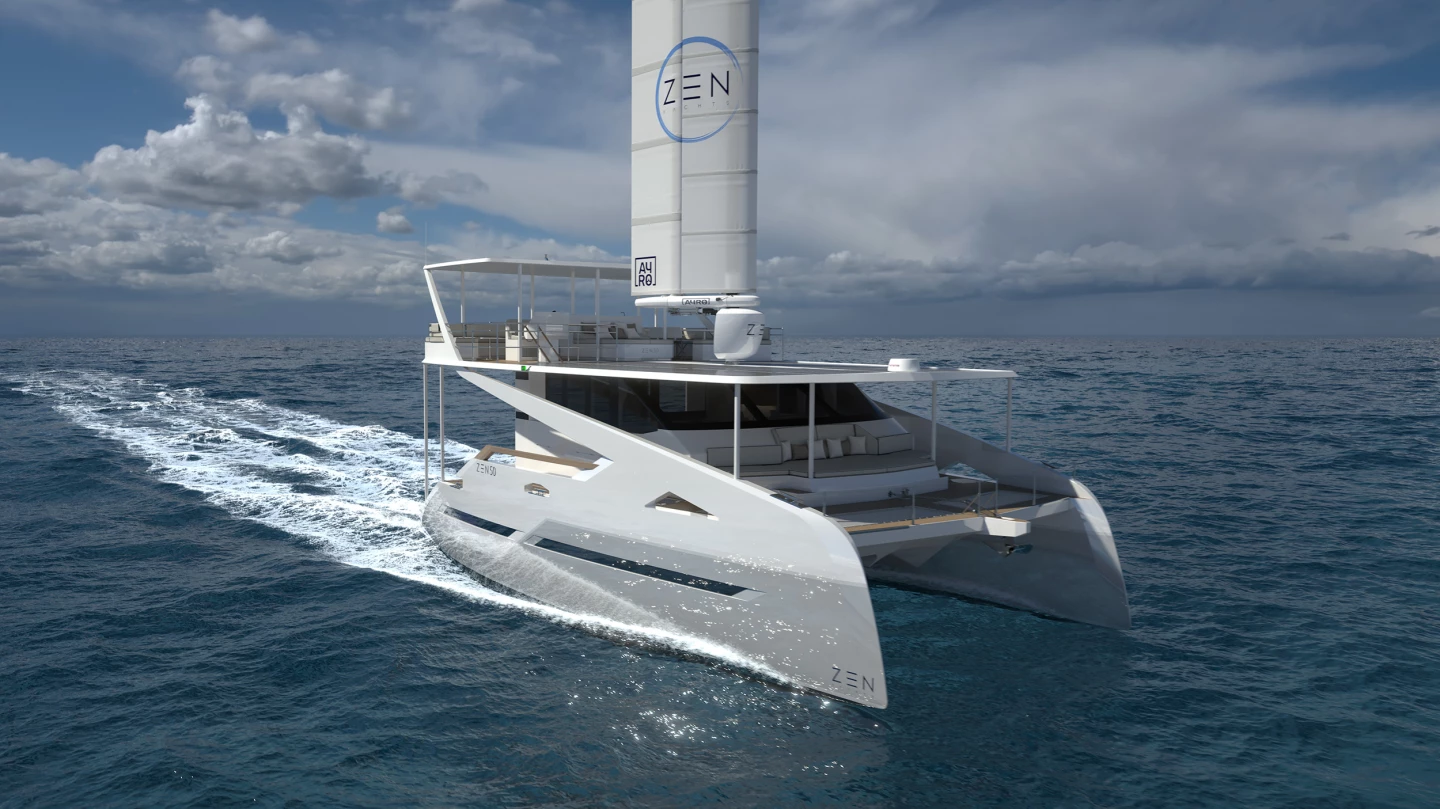Ocean-capable solar-powered yachts are an appealing idea, though not exactly a new one. And according to Malta's ZEN Yachts, many solar catamarans come equipped with generators that essentially makes them hybrid diesel-solar vessels. The marine startup's Zen50 is described as a true solar boat, and is also reckoned to be the first production yacht to feature a wingsail.
Zero Emission Nautic – or ZEN Yachts – hasn't actually built the Zen50 yet, but the first order is in and headed for launch in early 2023. Designed by acclaimed naval architect Julien Mélot, the 15.7-m (51.5 ft) luxury yacht features carbon fiber and Corecell composite hulls inspired by performance catamarans for minimal drag, with optimization courtesy of computational fluid dynamics analysis, and sports a 16-kW solar roof and a 160-kWh main battery bank to power the all-electric propulsion system.
On motor power alone, the leisure craft is expected to have a maximum speed of 10 knots, but this vessel also has a semi-rigid Oceanwings OWS 3.2 wingsail installed to help increase that top speed to 14 knots. Zen Yachts reckons that folks can expect over 180 nautical miles (~330 km) of range over a 24-hour period, though probably not at those speeds. Cruising speed on solar/battery is reported to be 4.5 - 5 knots continuous, or 6 - 10 knots for both solar and wingsail.

The wingsail was developed by VLPL Yacht Design spin-off Ayro, and is an evolution of the technology used on the BMW Oracle racing trimaran that defeated the Alinghi V in the 33rd America's Cup in 2010.
Naval architects VLPL continued to tweak the design, and installed a version on the Energy Observer floating laboratory in 2019. The Ayro team has now used the data gathered in the years since and fine-tuned the control algorithm, with the Zen50 reportedly being the first series production leisure vessel to benefit from the fully automated wingsail.
The Zen50 features two helm stations, with the flybridge measuring some 34 m2 (365 ft2). A 10-kWh backup battery will help keep navigation and comms powered, while also assisting with the operation of the wingsail.
"Our customers are aware that they will be sailing a performance catamaran with zero emissions; they are not looking for a floating hotel, but rather want to enjoy the experience and reconnect with the elements," said Zen Yachts in a press release. "The wingsail acts as a range and speed extender, allowing those who dream of sailing the oceans with their families to do so without leaving a carbon footprint."
The Zen50 can accommodate up to 12 passengers in four double ensuite cabins together with one bunk double and one single, with any extra sleeping needs met by temporary areas in the saloon or dining areas.

Elsewhere are two large day beds, the yacht can be optioned with three dining areas to cater for more than 10 people via a professional galley and two wet kitchens, and SpaceX's Starlink satellite internet is included.
The Zen50 can also come with an electric tender, electric water scooter, e-jet boards, and e-foils, while an onboard dive compressor could cater for underwater adventures.
Zen Yachts is due to open its Barcelona showroom at the Marina Vela in April, which is close to where the first hulls are currently being formed. Work on a second yacht will begin when "the first one comes out of the mold." The Zen50 is being offered in Racer, Cruiser and Explorer configurations and can be had with or without a wingsail. Pricing starts at a cool US$1.6 million.
Source: Zen Yachts









